| GEL EMBELLISHMENT ON GICLÉE PRINTS
|
 |
| A popular method for enhancing Giclée canvas prints, making them more than just a copy of an original, is through a process known as embellishment. The original artist, or an artist at the printing company, essentially paints over the printed image, using color or texture to bring out certain tones, highlight areas, and reintroduce real brushstrokes into the reproduction. This method can also be used on photographs, and can be done in the studio or by the buyer in their own home.
While acrylic paints can be mixed with a gel medium for a combination of color and texture, today we will explore embellishing using only gel medium, which is completely transparent once dry. In order to add color, all one must do is mix acrylic paint into the gel medium; the rest of the process is the same.
|
| WHAT IS GEL MEDIUM? |
 |
|
Gel medium, also called Acrylic Gel Medium or Acrylic Texturing Gel, was originally created to extend the drying time of acrylic paints. While one of the advantages of acrylics is their speedy drying time, this does minimize the amount of blending that can be done on the canvas. By mixing in a gel medium, the paint dries more slowly on the canvas, allowing the artist more leeway.
When you open the lid on you gel medium, it looks kind of like white glue, with a soft, almost gel-like texture. It is quite thick (unless you've chosen a liquid version) and usually looks kind of glossy.
There are "mediums" specifically for extending the drying time of paint, for moulding, modelling, or glazing. We won't cover these products today. But there are also many types of gel medium available:
- Gloss gel medium dries with a glossy finish and is ideal for the type of embellishment we'll be talking about, because the printed canvas will already be coated with a varnish that adds a glossy sheen.
- Matte gel medium dries with a satin finish and is said to have better adhesive qualities.
- Semi-matte, semi-gloss, ultra-matte, and ultra-gloss are modified variations of these two options.
- Gel mediums may be "soft", "heavy" (or "thick"), or "super heavy." This refers to the density and viscosity of the medium. Heavy and super heavy gels should be used only on rigid or supported surfaces like wood or canvas since, as the name implies, they are quite heavy and may damage more fragile substrates. It is useful for creating peaks on the surface of the canvas because it holds its shape once applied.
In addition to embellishing prints, gel medium can also be used to transfer inks from one substrate to another, called an image transfer. It can be used with thick daubs to affix three dimensional objects to a collage piece, or spread thinly to act as a glue for adhering other paper substrates to a canvas.
OTHER MEDIUMS
Gel mediums are only one of many products that can be added to the finished surface of a painting or print, or mixed with paint to create a unique texture.
Texture Mediums
Not to be confused with texturing medium, which is just another name for gel medium, texture mediums are similar but have small granules mixed into the gel. These granules may be sand or glass beads, or even dark chips of rock-like material.
"Effects" Mediums
The Liquitex brand offers many mediums that create different effects when applied to the canvas.
- Ceramic Stucco creates a matte, plaster-like finish with tiny granules.
- Airbrush is mixed with acrylic paints, and creates a smooth, spray-like finish.
- Blended Fibers mimics the appearance of scrunched and solidified textiles when dry.
- Iridescent creates metallic tones when mixed with acrylic colors.
Fluid Mediums
Fluid mediums are mixed with paint to achieve a lustrous effect when painted over a finished canvas, allowing the artist to alter the existing colors with a translucent tint. They are available in glaze, gloss, and matte finishes.
Varnish
"Glamour II" is a canvas print varnish offered by Breathing Color that doubles as a gel medium. It is self-levelling, but if left to become tacky on the surface of the print, it can then be shaped to create texture much like a regular acrylic gel medium. It is available in matte and gloss.
|
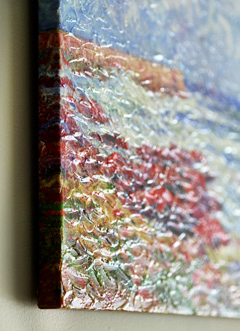
Sample gel embellished canvas print
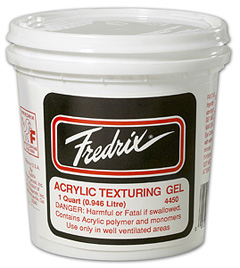
Acrylic Texturing Gel
|
| EMBELLISHING CANVAS PRINTS WITH GEL MEDIUM |
 |
STEP ONE
Pick your medium.
As stated above, a gloss medium is a good choice because it will best match the glossy nature of the original print. However, if you are going to cover the entire surface with gel medium, the current print finish doesn't matter. If you would like a satin, less lustrous finish, select a matte gel medium.
Next consider the surface onto which you are applying the gel medium. If it is canvas or a rigid substrate, a heavy medium is suitable, but if you are embellishing paper, choose a soft medium so it will not warp or weigh down the image.
Whatever you choose, consider testing it out on the side of the canvas (if the edges are printed) or a corner of a paper print that will be hidden by a mat or frame. This way you can see firsthand how the colors will react beneath the gel, and ensure the finish matches the varnish already on the print if you are not covering it entirely.
STEP TWO
The second step in embellishing a canvas requires gel medium or tools at all.
Ideally, your canvas print will be stretched on a wood stretcher bar frame. This is the easiest way to apply the gel medium, and will ensure no problems arise from trying to stretch it after the fact.
Prop the canvas up on an easel, or somewhere it is visible at eye level on a slight tilt. This is the best way to view how light hits your canvas when it is hung. If you view and paint your canvas while it lies flat on a table or floor, not only will your shadow be blocking the image, but the lighting will be very different.
Step back and take a good look at the image. Pick out sections that you would like to enhance with some extra depth, such as individual leaves on a tree, peaks of ocean waves, or the eyes in a portrait. Move closer; examine how the brush strokes spread across the canvas, and note where they change direction for different figures or subjects.
Take this time to also select the brush or brushes you will use; they should be of a similar size to the brushstrokes visible in the print (or small enough to fit within the details, in the case of a photograph). Alternately, you may choose to use your fingers or a palate knife. Each tool will create a unique appearance.
STEP THREE
Once your medium and application style have been selected, it's time to apply the medium to the canvas. This is the point where you can mix the gel medium with your acrylic paints if you are adding color instead of clear texture. Keep in mind the color may make the mixture more opaque than the plain gel medium, making it somewhat more difficult to see the original brushstrokes.
Think about the parts of the image that are most important and consider ways to enhance them. Because gel medium dries quite slowly, you can take your time. You can even finish only part of the image to see how it looks and finish the rest, or add more to the first sections, later.
Apply the medium thickly - you can always spread it around to thin it out. Consider creating thick ridges along the shadowed sections of the piece, or leaving big daubs on "sunlit" areas that should catch the light.
Experts suggest simply applying a textured layer evenly to the whole canvas, unless that is the specific look you're going for. If the image is of a rocky ocean and almost cloudless sky, consider applying the medium only to the stormy waves, with a few embellishments on the clouds.
STEP FOUR
Don't let the whiteness of the medium concern you. It will dry clear over the course of about 24 hours - thinner sections will dry before thicker sections.
When you are satisfied with your embellishments, put the artwork somewhere safe to dry. It should be placed away from open windows, pets, and other debris that could get stuck in the medium as it dried. Try not to touch the piece until the medium is completely clear.
Some tutorials on applying gel medium to Giclée prints recommend applying a clear coat or varnish to protect the print and embellishment, while others strongly advise against it, because of potentially damaging interactions between the original varnish and the one you use. If you feel a protective or archival coating is required, talk to the print company to find out what coatings are safe to apply.
|
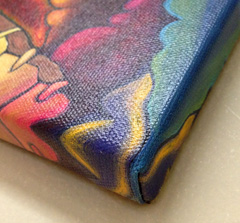
A canvas print without gel embellishment
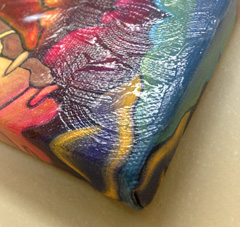
A canvas print with gel embellishment
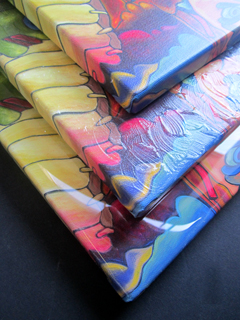
Canvas gallery wraps with regular coating, Gel and Resin
|
| COMPARING GEL MEDIUM BRANDS |
 |
|
There are a vast number of artist supply companies that offer gel mediums and other mediums that can be mixed with paints or applied over finished paintings.
Below are three of the more common brands and the gel mediums they offer.
LIQUITEX
- Gloss
- Gloss Heavy
- Matte Gel
- Matte Super Heavy
- Ultra Matte
GOLDEN
- Soft gels
- Regular gels
- Heavy gels
- Extra Heavy gels (extra body, and can hold peaks)
- High Solid gels (similar boxy to Extra Heavy, less shrinking when drying)
WINSOR & NEWTON
- Professional Acrylic Gloss
- Professional Acrylic Matt
- Galeria Heavy Structure, gloss
- Galeria Structure, gloss
|
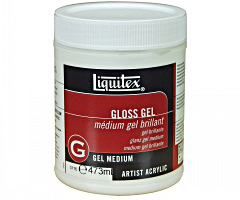
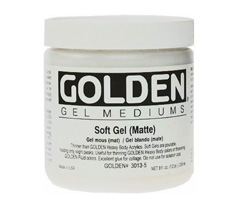
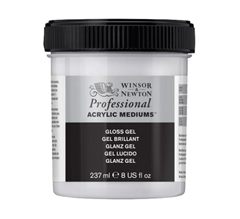
|
| Gel embellishment is a great way to add a unique touch to your canvas Giclée print; this method will increase the value and enhance the appearance of the piece.
At KeenART Media, we offer gel embellishment for any canvas print you order. If you have any questions about this service, or would like to discuss your embellishment options for a specific piece, please do not hesitate to contact us.
|
|
Compare Standard, Gel and Resin Coatings on Canvas gallery wraps
|
| Gel Embellishment FAQs: |
 |
Q1 : Can I choose the kind of gel medium I want for my print?
At this time, we offer embellishment with gloss gel only. In the future, we hope to offer matte gel medium as a second option for embellishing your canvas prints.
Q2 : What is gel embellishment?
Gel embellishment refers to the process of adding an "acrylic gel medium" to a canvas or paper print. This medium dries clear, creating texture on the surface of the flat print. Alternately, some artists mix acrylic paints with the medium to add colored texture to their canvas prints.
Q3 : Do you add a protective coating over your embellished prints?
Because the print has already been sealed with varnish prior to embellishment, an additional protective coating is not required. We do not recommend adding your own protective coating at home, because it may react adversely with our varnish.
Q4 : How do I care for my gel embellished print?
A dry duster should work to keep your print free of any build-up in most instances. Unlike a regular Giclée canvas print, when your print has been gel embellished you can wipe it gently with a slightly damp cloth to remove more stubborn dust.
Q5 : How much texture can my embellished print have?
The short answer? As much as you want! A regular gel embellishment will have a thin layer with peaks no more than 2 mm high. However, if you would like a thicker application, feel free to discuss this with us. Please note: there will be an additional charge for extra gel medium.
|
|
| If you don't find the answer you're looking for here, please contact us. |
|
© 2002-2024 - KeenART Media Ltd.
|
|
| |
|

